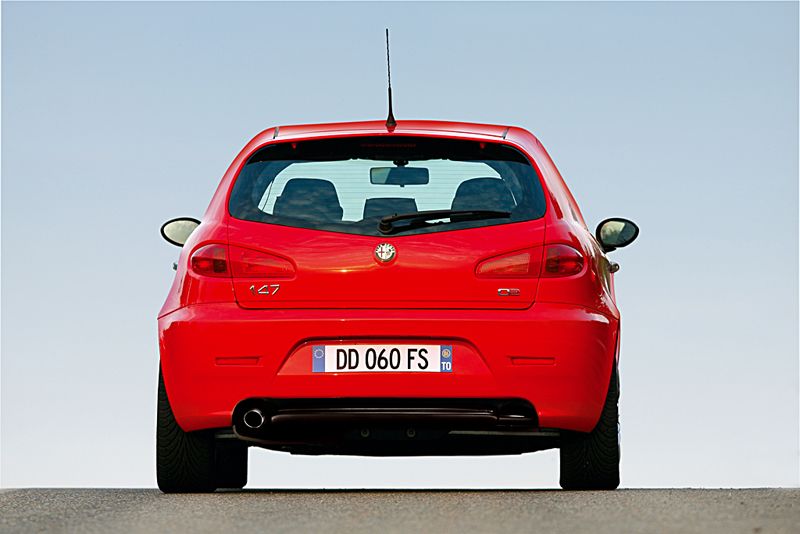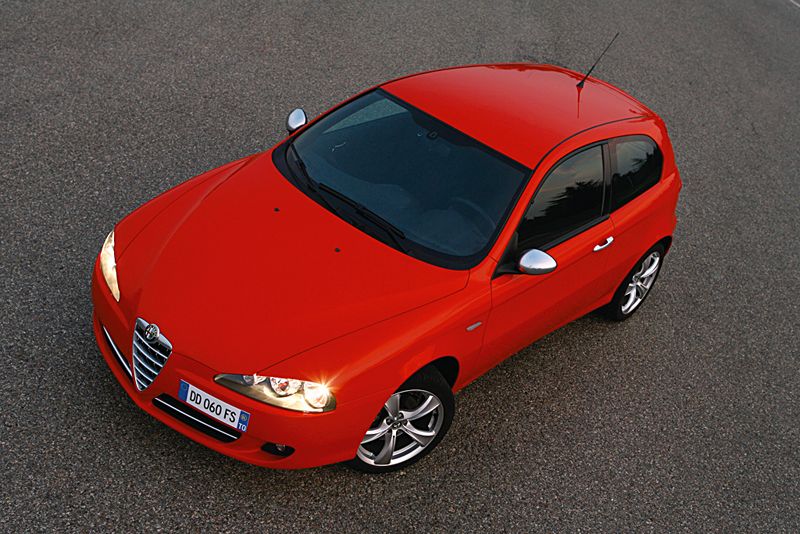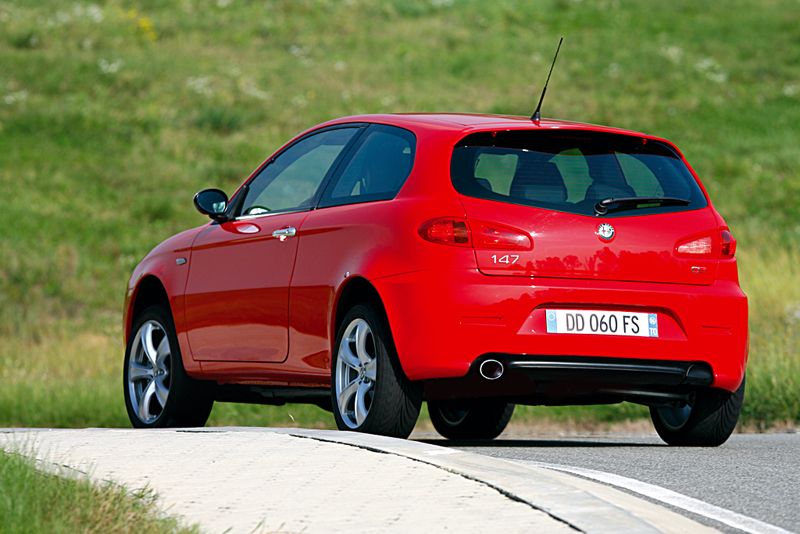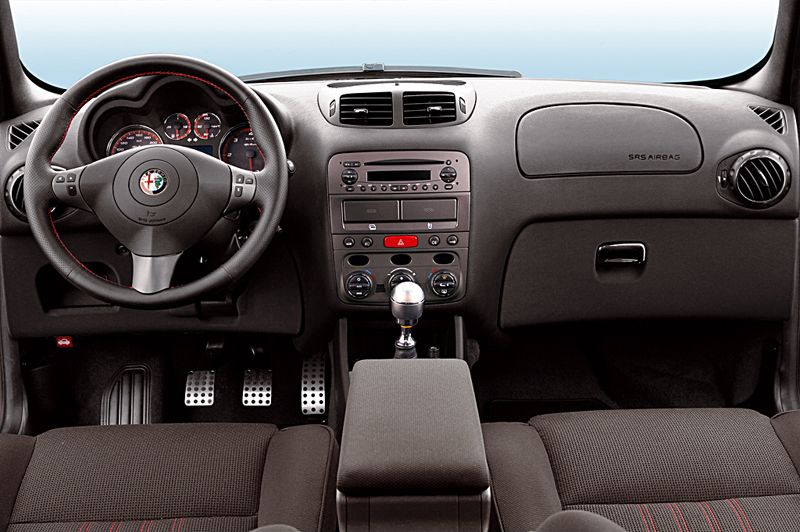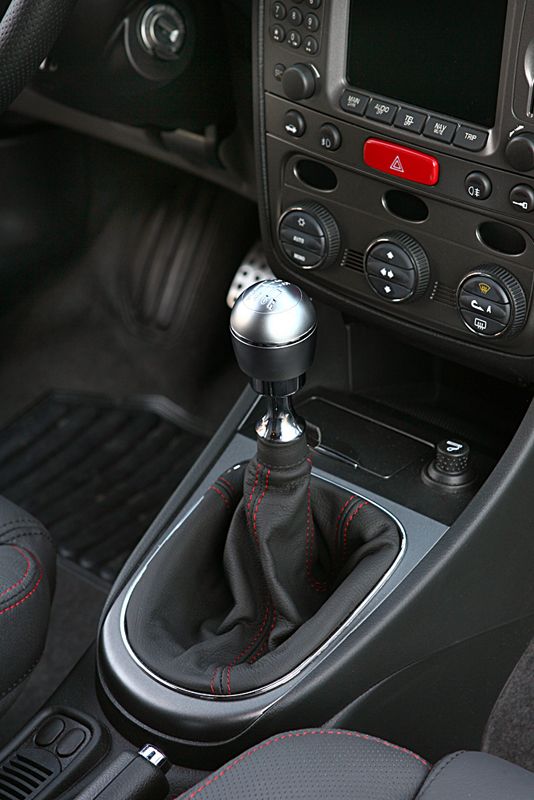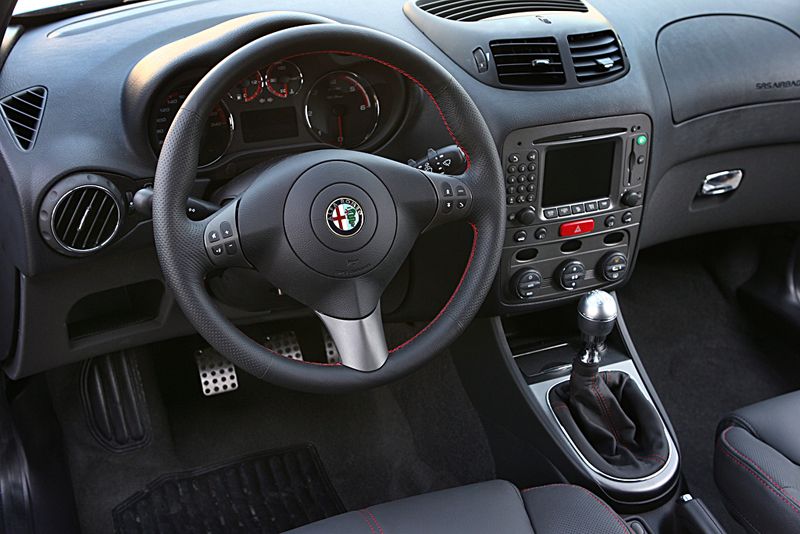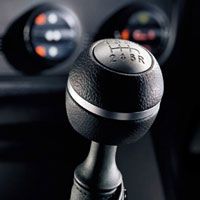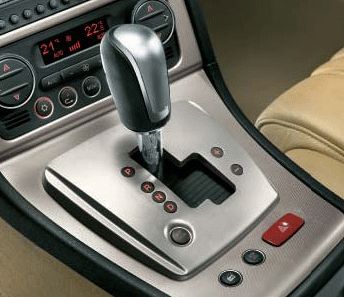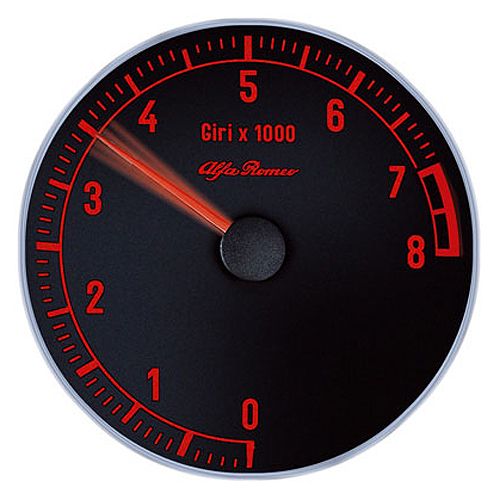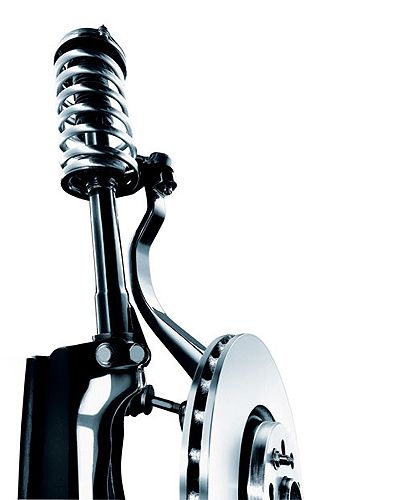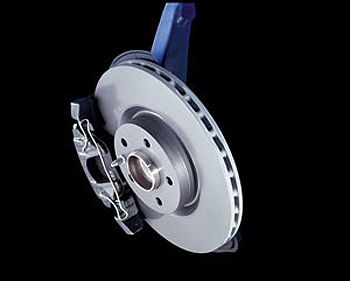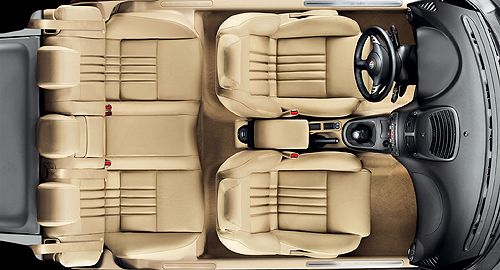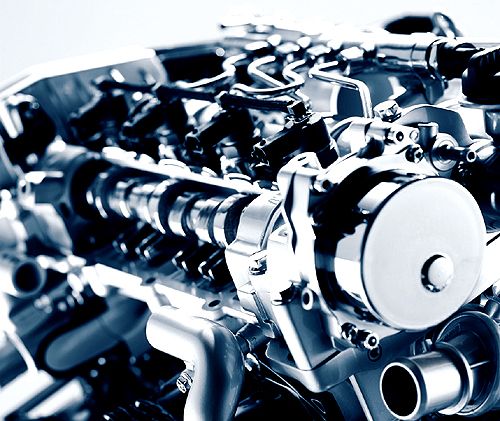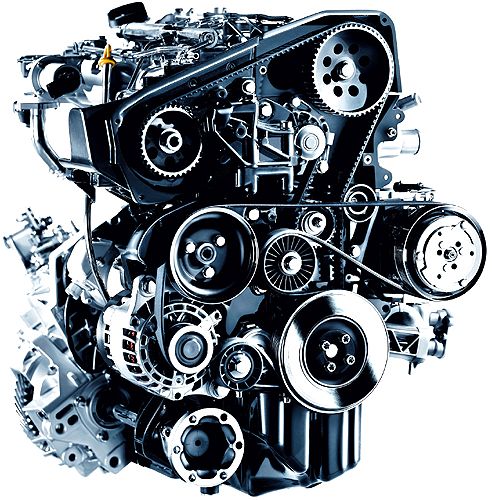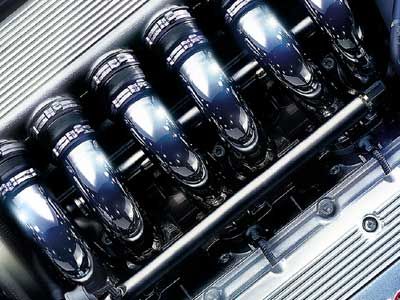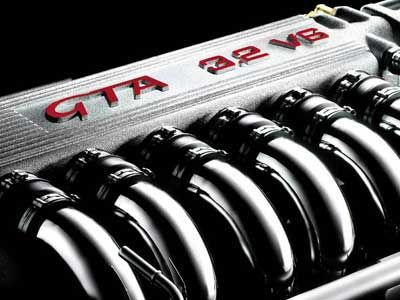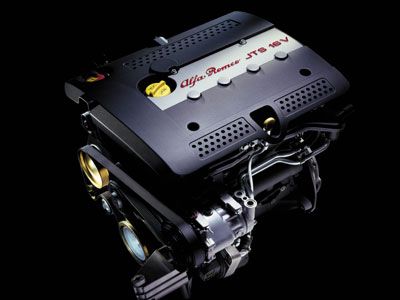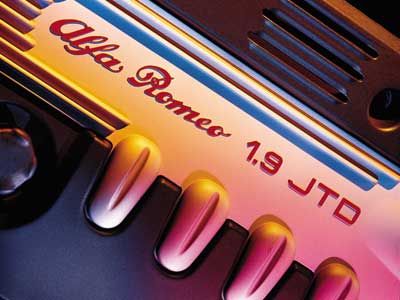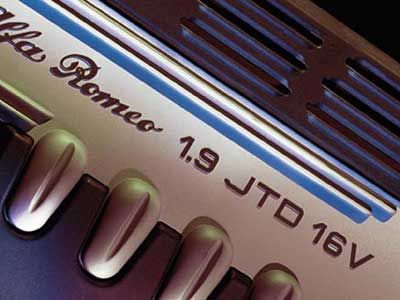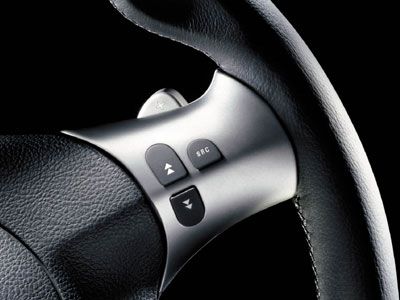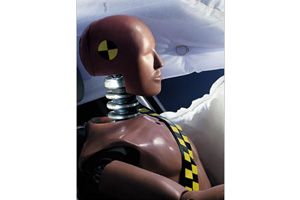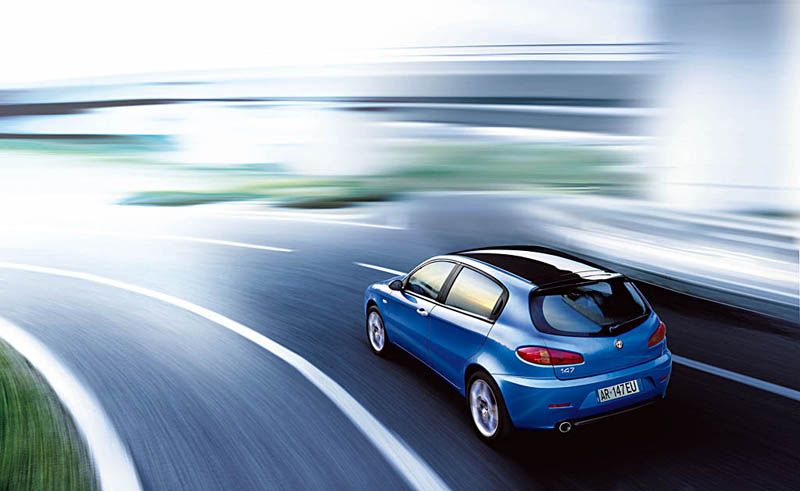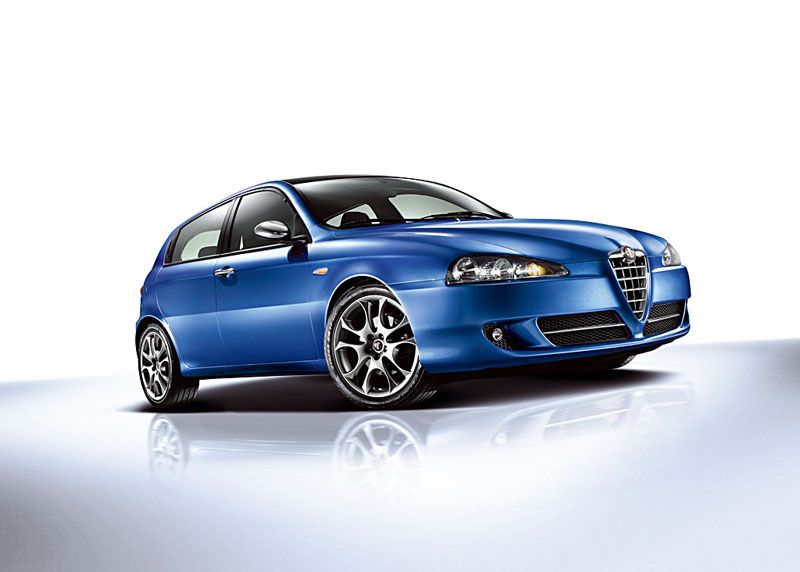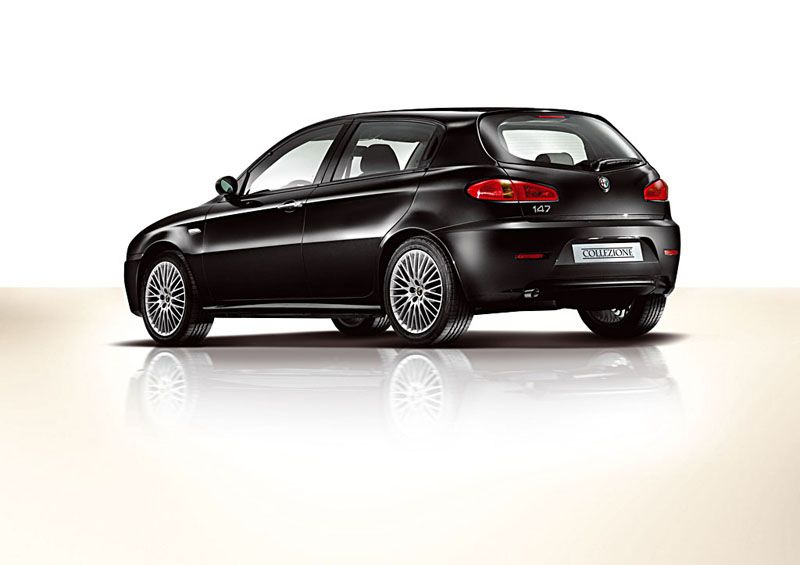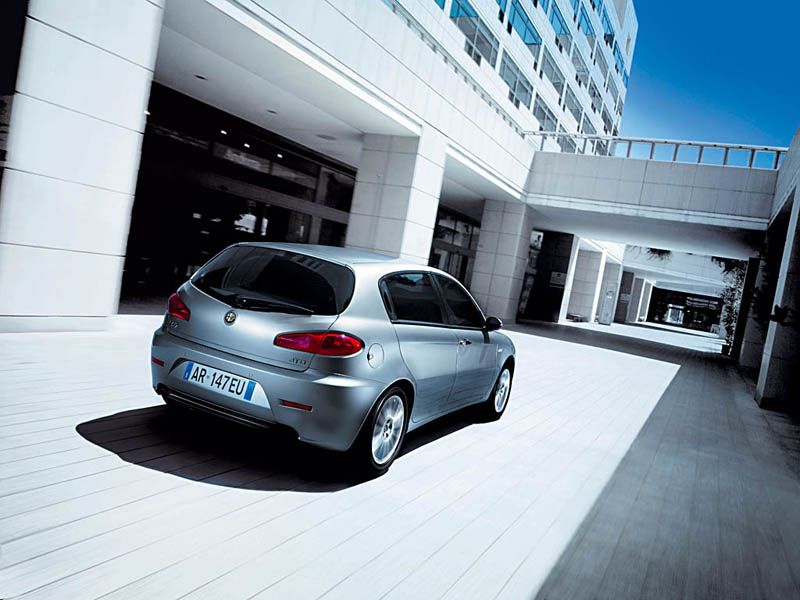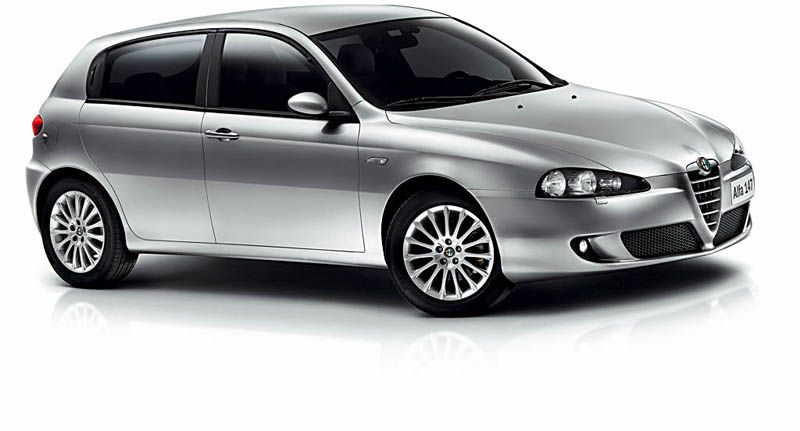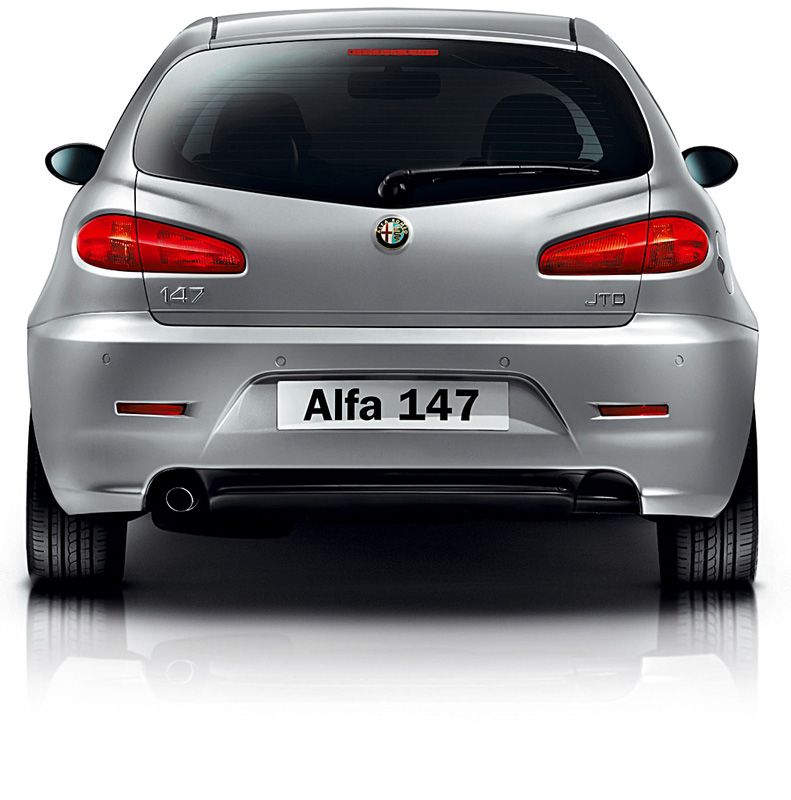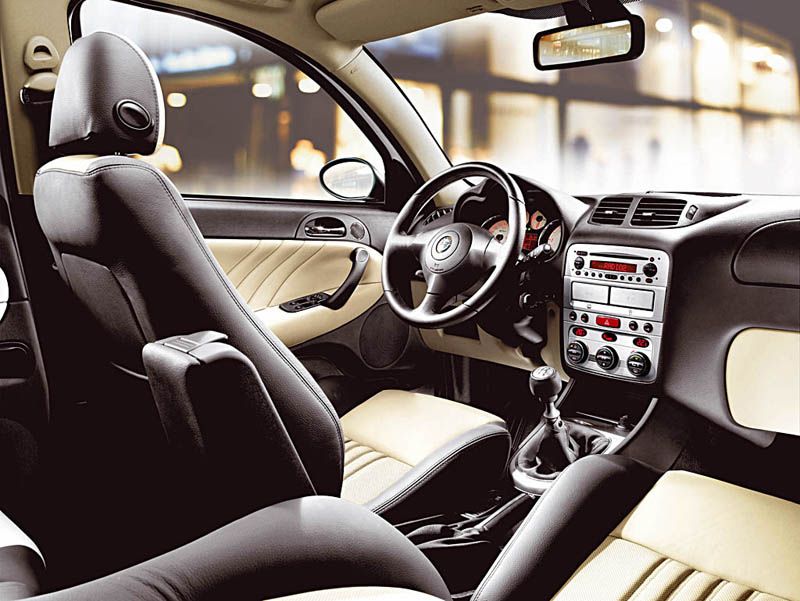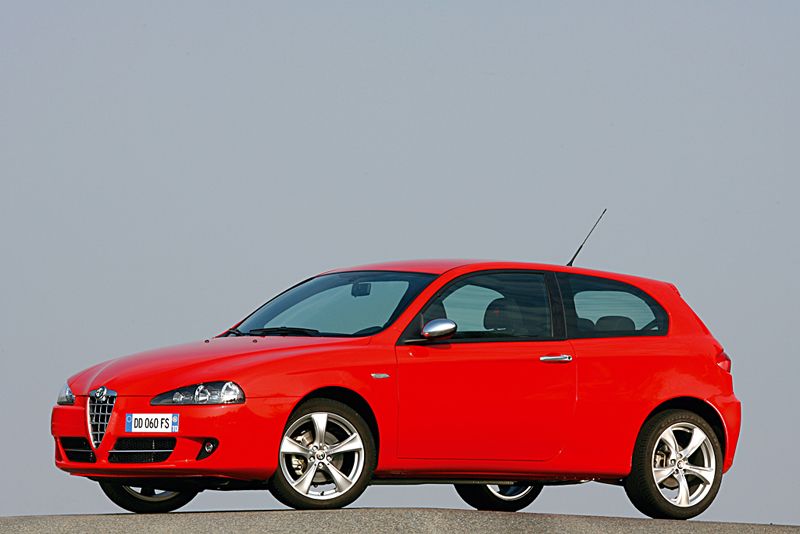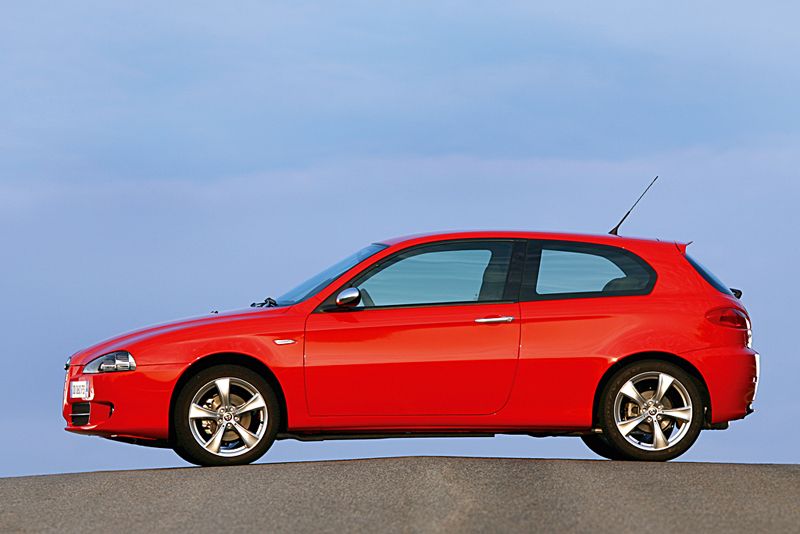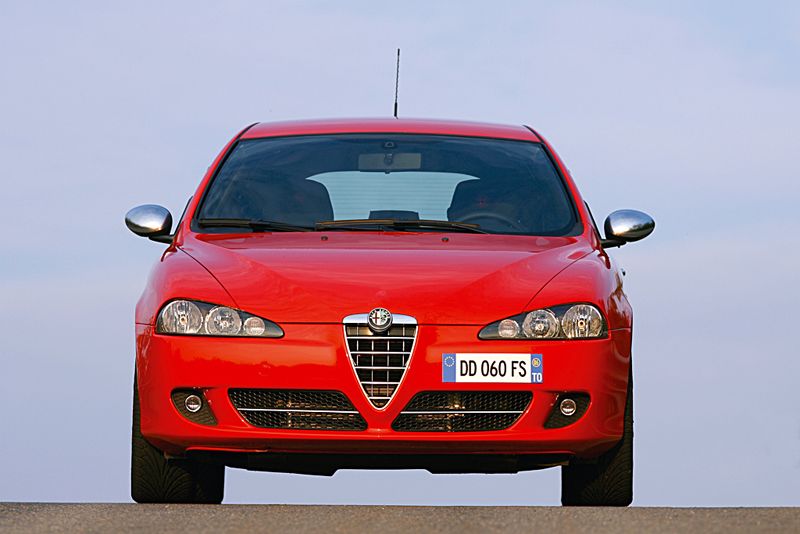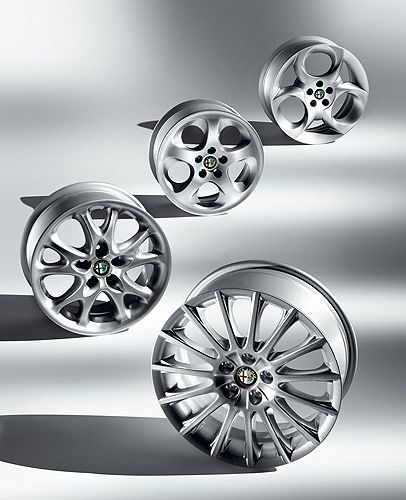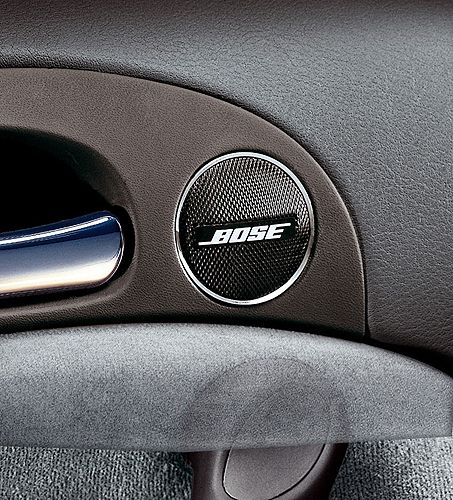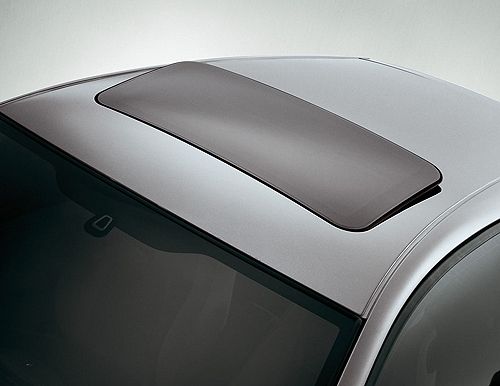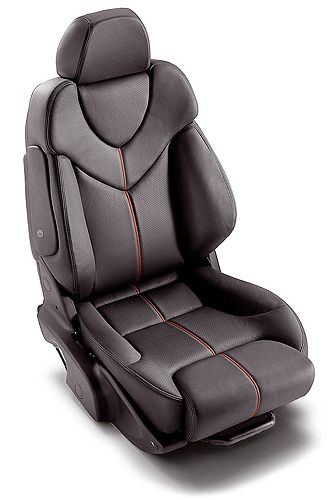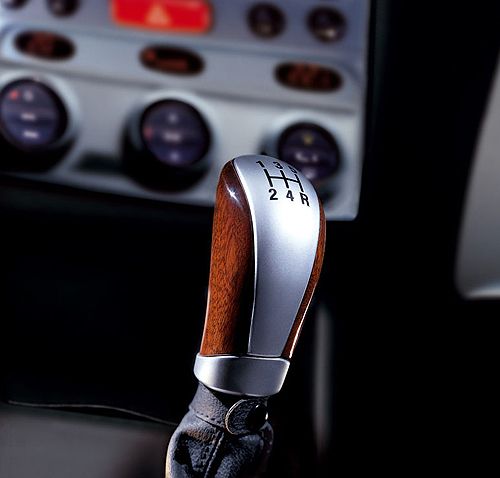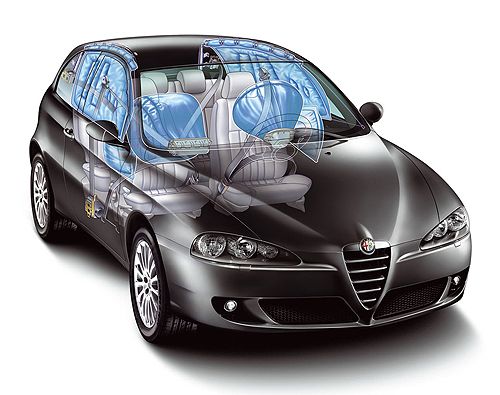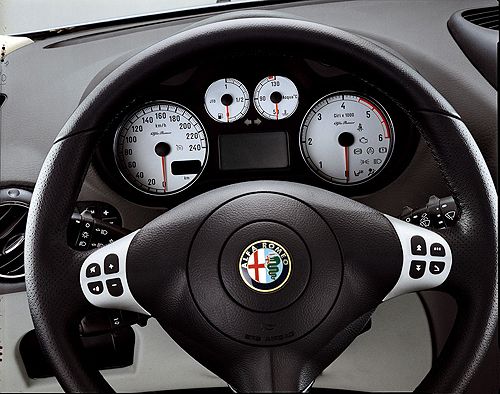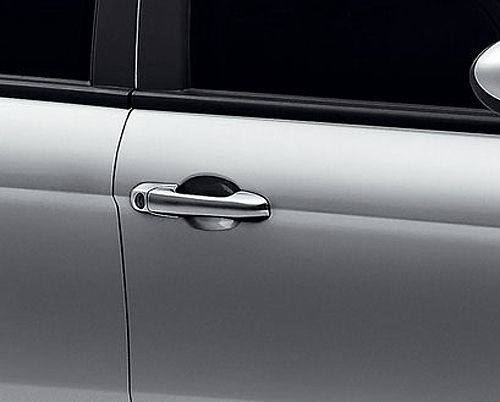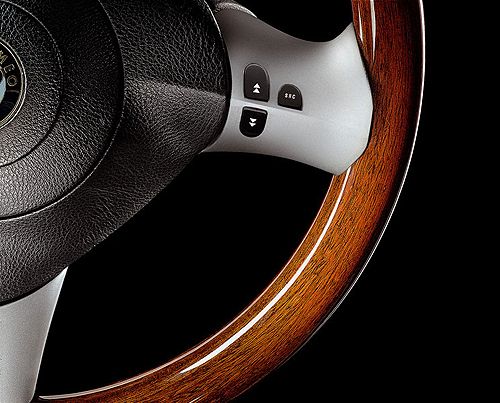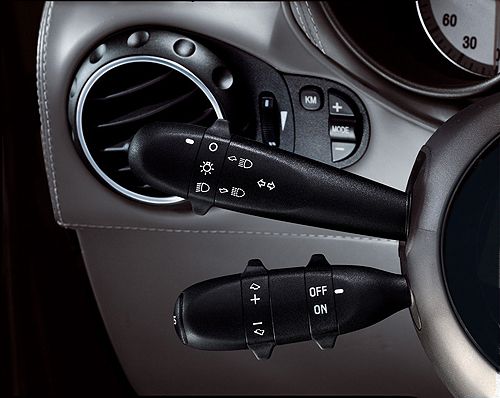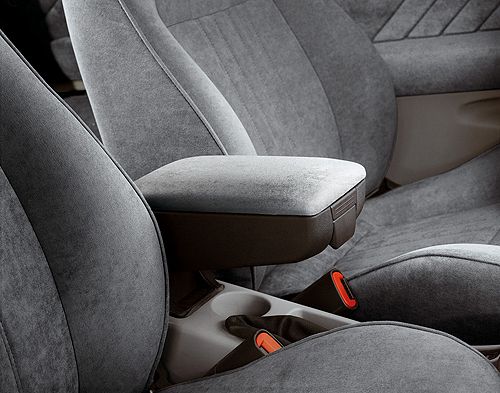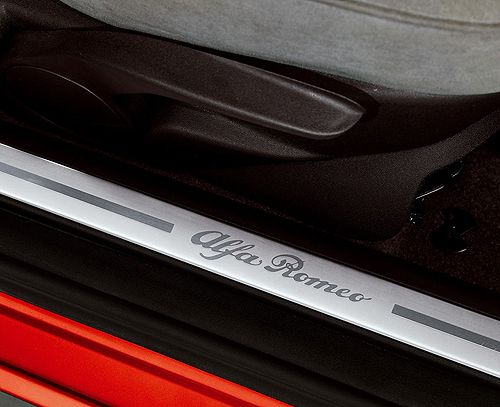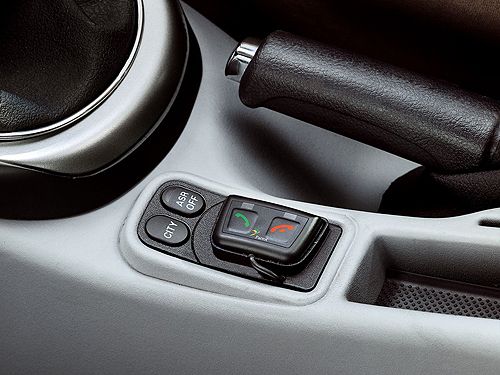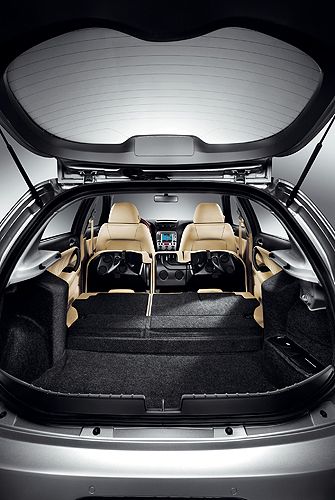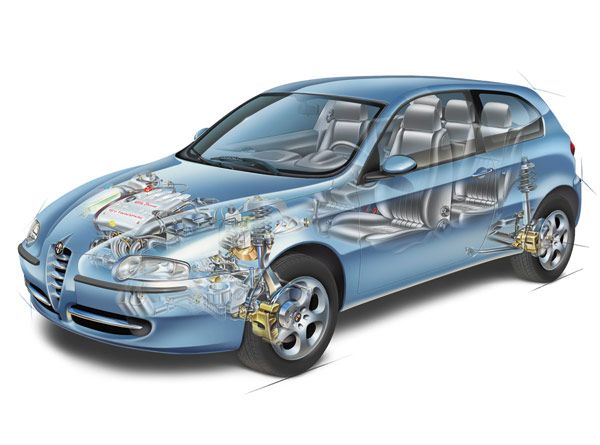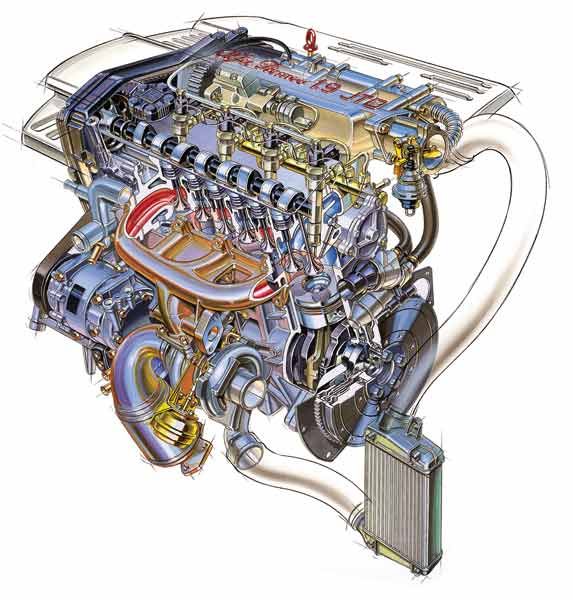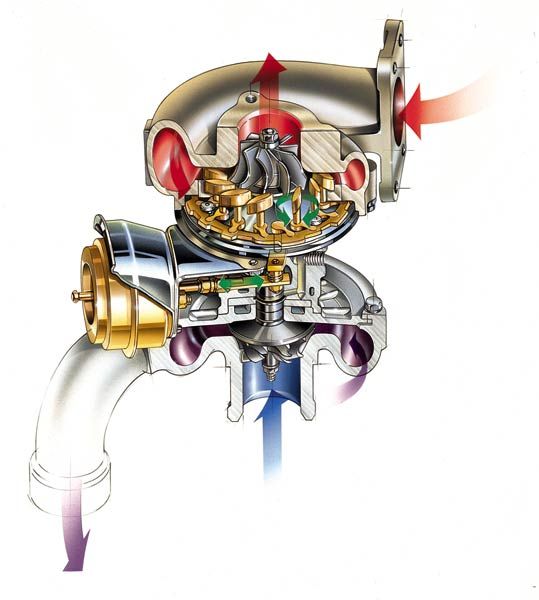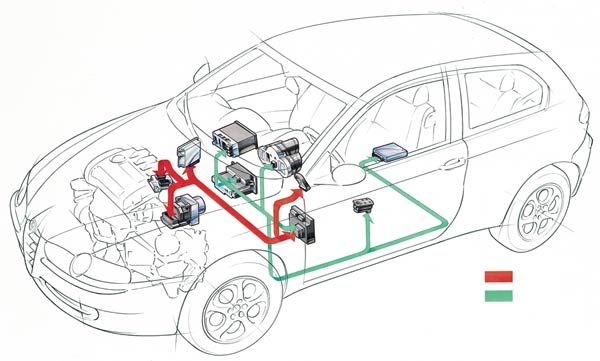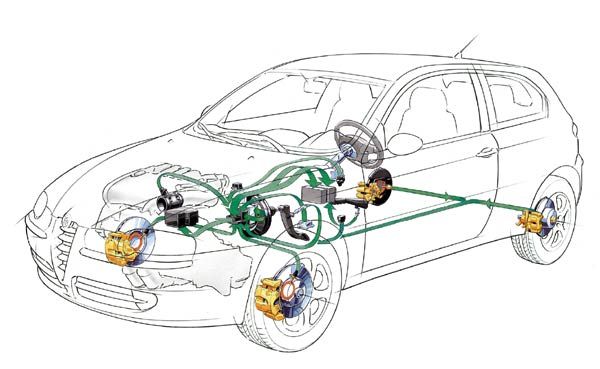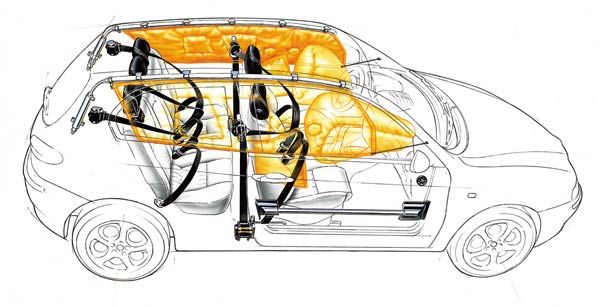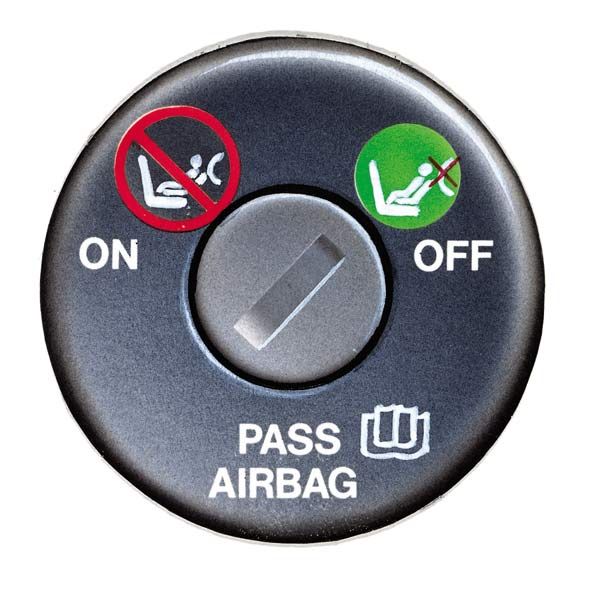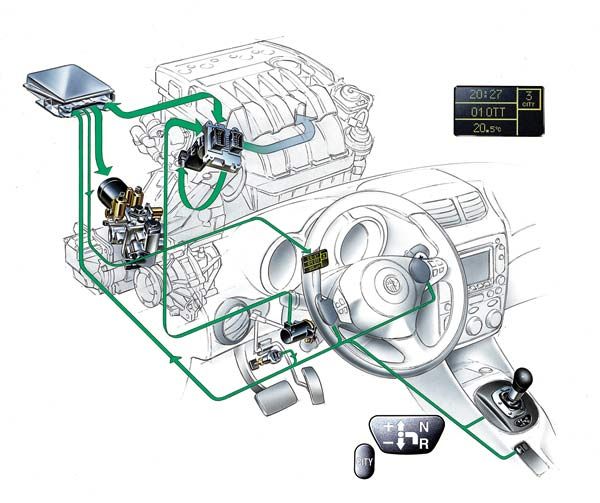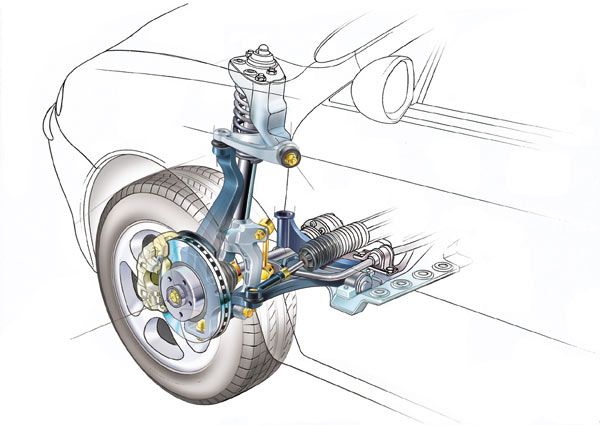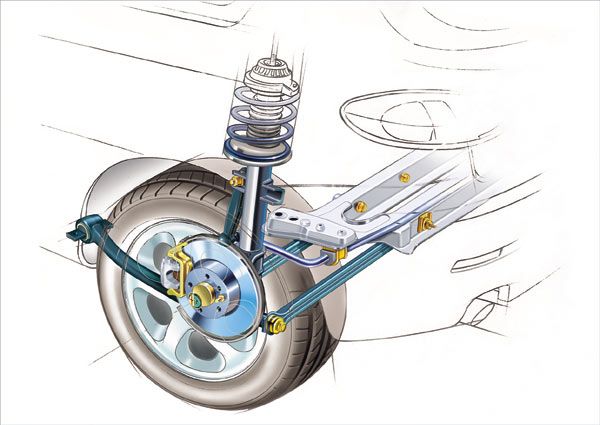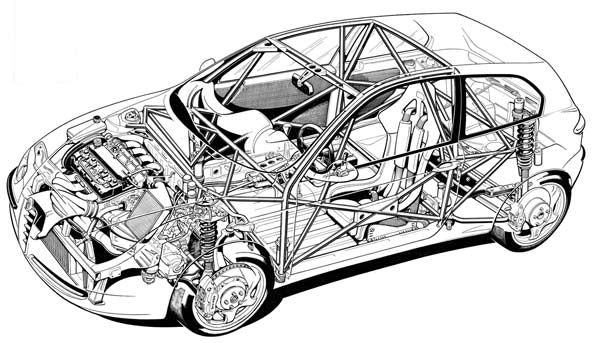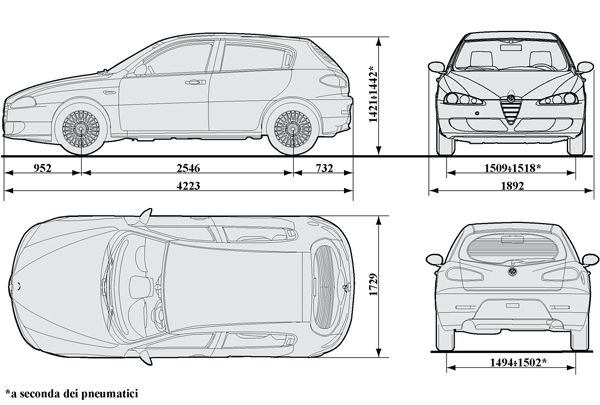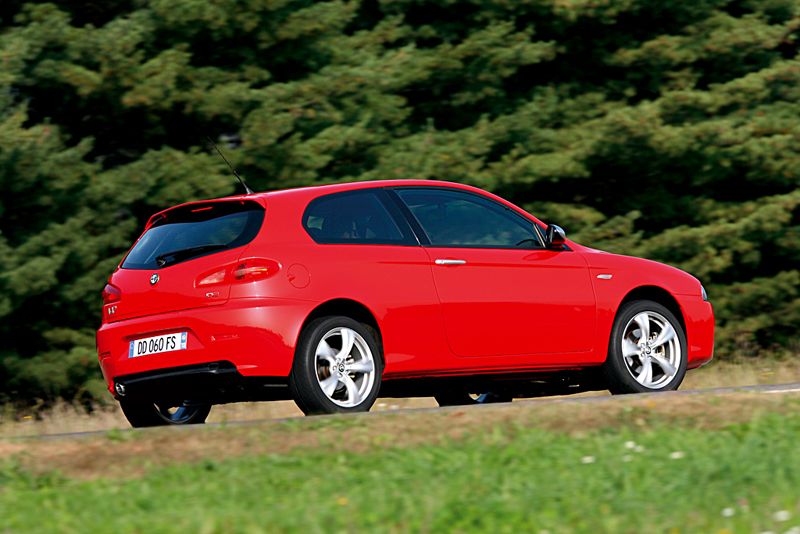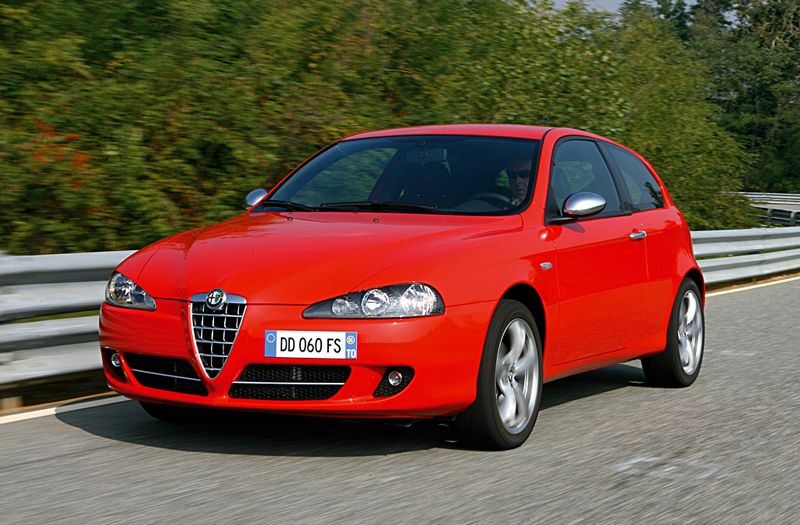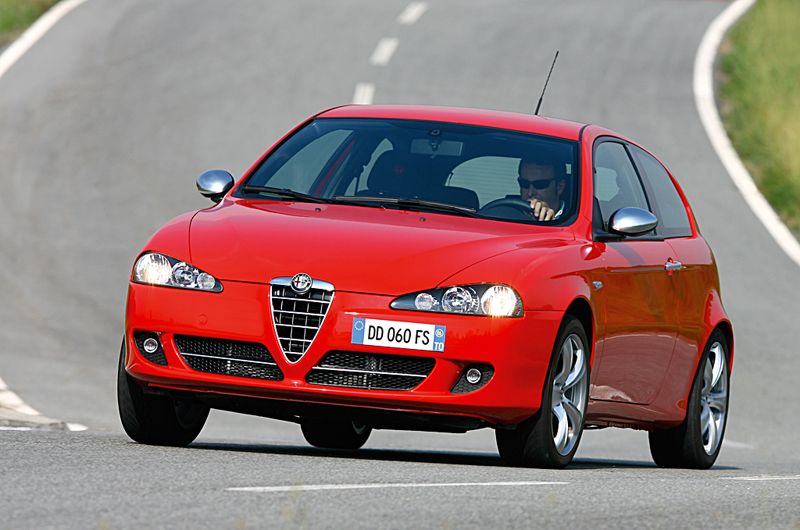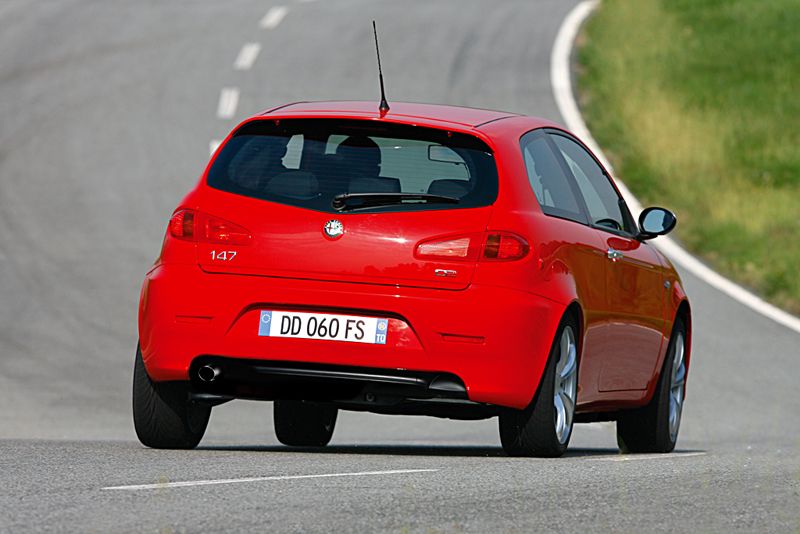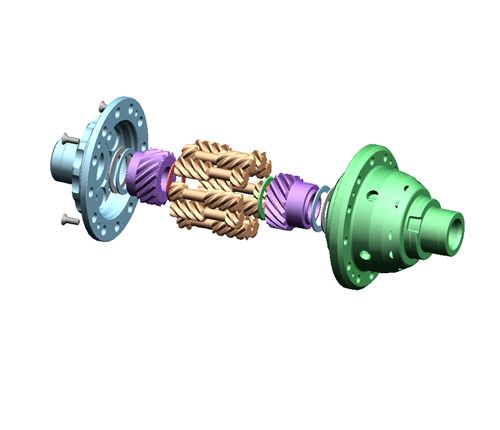Available with 3 or 5 doors, the Alfa 147 makes its presence felt on the road, with its streamlined styling, gutsy profile, low grille and elongated headlights with emphatic lines that slope towards the shield. We could say that the model brings out all the brands creative vitality.
alfa-romeo-147
- Make: Array
- Model: alfa-romeo-147
2007 Alfa Romeo 147
- Horsepower: 512@0
- Torque: 3500
- Transmission: 5-Speed Automatic
- [do not use] Vehicle Model: Array
Alfa 147: the prestigious compact
The compact 147 guarantees superb performance, combined with the Italian styling that gives it its unmistakable line, which is harmonious but always ‘muscular’. The front conveys sportiness and class combined with a certain aggressiveness thanks to the grille and the tapered bonnet. The elongated headlights (glass lids that incorporate three circular chromed elements on a black background) and the air intake, which is divided by one central and two lateral, vertical elements combine to underline the compact Alfa Romeo’s strong personality.
At the rear, the design of the tailgate underlines the car’s elegant styling, which is accentuated by the extended triangular design of the light clusters. And the rear door handles of the five-door version, which are camouflaged into the bodywork, have become an essential feature of the 147.
Inside, the Alfa 147 has a refined, elegant environment that guarantees the highest levels of comfort, an ideal driving position, and an excellent balance between compact, enveloping volumes, uncluttered surfaces and soft, essential lines. All aspects of the driving position adjust: the position and depth of the steering wheel, the height of the wrapround seat and the degree of lumbar support.
The rear head-restraints are designed so that they can be lowered to increase visibility, and the graphics of the conveniently placed control panel on the facia make it clearly visible, with a light or black background.
The passenger compartment is comfortable and spacious, thanks in part to the detailed study of parameters that improve posture as well as head and leg space, but also elegant and highly individual – for example the ‘ridged’ pattern of the seats and door panels which is also set off by a chromed frame that highlights the tweeter inside the door release trim.
The Alfa 147 is also the car for people who like to stand out with class but above all without ostentation. The refined, functional interior can be fitted out with optional features that enhance the level of comfort: for example, a sophisticated Bose® Hi-Fi system, the Bluetooth™ hands-free device that allows you to speak on your cell phone through the car’s audio system without taking the phone out of your pocket or bag, and the iPod Pack, that lets you listen to your favourite music with style, design and technology.
Cutting edge engines and engineering
The Alfa 147’s sporty personality is immediately obvious from the choice of engines, all of which guarantee low consumption, high power outputs and extraordinary elasticity, even at low speeds. The engine range is made up of three petrol and two turbodiesel units: two 1.6 Twin Spark 16 valves delivering 105 and 120 bhp, and torque of 14.3 and 14.9 kgm; and the 150 bhp 2.0 16v (torque of 18.5 kgm), another member of the Twin Spark family which has proved extremely popular with all Alfa Romeo customers. The latter engine incorporates a variable geometry intake system, and can also be combined with a Selespeed gearbox with robotised gear engagement and clutch control. The turbodiesels are two powerful 1.9 JTDM units which deliver 150 bhp and 120 bhp at 4000 rpm (with torque of 305 Nm and 280 Nm respectively at 2000 rpm), which are extremely enjoyable and entertaining to drive.
The Alfa 147’s excellent behaviour on the road is also the result of the suspension layout, with high double wishbones at the front, to accentuate the stability of the front-wheel drive, anticipating the inclination of the axis on the bend, to anchor the car to the ground, and independent MacPherson suspension at the rear. The trim was designed to achieve the highest level of comfort, and handling remains one of the car’s outstanding strong points.
Class-topping safety
The Alfa 147 fears no comparison where safety is concerned. Starting with the excellent torsional and flexural rigidity of the bodyshell: 110,000 kgm/rad for the 3-door and 95,000 kgm/rad for the 5-door version. The model also has a servo-assisted hydraulic braking system made up of two independent diagonally split circuits. This is particularly efficient and guarantees prompt, smooth braking as well as short stopping spaces. The front discs are ventilated and 284 mm in diameter, and the solid rear discs have a diameter of 251 mm with Lucas two-piston (38 mm) floating aluminium callipers.
In addition to the excellent performance of this braking system, the entire Alfa 147 range features an ABS anti-lock braking system, complete with EBD (electronic brake distributor), and VDC (Vehicle Dynamic Control) which guarantees absolute control over the car in all conditions, even the most extreme, thanks to the ASR (Anti Slip Regulation) system.
VDC is Alfa Romeo’s interpretation of ESP (Electronic Stability Program), the system that cuts in when conditions are close to the limit and the car’s stability is at risk, to help the driver to control the car. It is a sporty device, as you would expect of an Alfa with excellent roadholding, and lets the driver enjoy total control of the vehicle as long as conditions are normal, only intervening just before the situation becomes critical. Another device, MSR (Motor Schleppmoment Regelung), cuts in if he changes down suddenly in poor grip conditions, giving torque back to the engine to prevent skidding due to wheel lock. ASR (Anti Slip Regulation) is an integral part of the VDC system, optimising traction at all speeds, assisted by the brakes and the engine control.
A broad, comprehensive range
The 147 comes in a choice of two bodies (3 or 5 door), five engines (1.6 TS delivering 105 or 120 bhp, 2.0 TS delivering 150 bhp and 120 bhp or 150 bhp 1.9 JTDM) with mechanical or Selespeed transmissions, and three outfits (Progression, Distinctive and Exclusive), as well as the Black Line and Collezione Special Series, and the new ‘Q2’ version.
First of all, even the standard outfit (Progression) is lavishly equipped, particularly where safety is concerned, with foglights, 6 airbags, VDC with ASR and MSR, ABS complete with EBD and Brake Assist, adjustable front seat-belts and two rear head-restraints. Plus 16” sports alloys (205/55 tyres), leather covered steering wheel and gear lever knob, split (60/40) folding rear seat, a multifunction display with a trip computer, electric front windows, electric black door mirrors (colour coded when the paintwork is metallic or Alfa Red), and remote control for centralised opening/closing.
The second outfit (Distinctive) adds dual-zone automatic climate control, a front armrest with a storage compartment, Alfatex fabric, cruise control, electric rear windows, 16” alloys with a spoked design and 205/55 tyres, and radio controls on the steering wheel (even the specific controls for versions with the Selespeed gearbox).
At the top of the Alfa 147 range is the elegant Exclusive outfit, which includes radio/telephone controls on the steering wheel, 17” spoke alloys with 215/45 tyres, voice recognition and Connect NAV+ (radio, CD-player, colour display, dual band GSM telephone, hands-free function, map navigator, Connect button for services, and telephone+voice memo voice controls), complete with ‘basic’ annual subscription.
Which brings us to the two Special Series, which are available with a 3 or 5-door body, the 120 bhp 1.6, and the 120 or 150 bhp 1.9 JTDM engines (only the 147 Black Line is equipped with the 105 bhp 1.6). The two versions share the same standard equipment which includes a radio with CD player, leather covered steering wheel and gear lever knob, split (60/40) folding rear seat and manual climate control. The standard equipment also includes the most sophisticated safety devices: from VDC to ASR, ABS with EBD, and six airbags.
In detail, the Black Line combines sportiness and style, underlined by its special ‘two-tone livery’, which combines one of the three body colours available (Alfa Red, Alfa Silver and Montecarlo Blue) with a number of elements painted in an elegant shiny Black (roof and rear spoiler), and satin finish grille, whiskers and mirror housings. The new Black Shadow interior features a new two-tone sporty fabric (black and grey), Anthracite Grey trims on the steering wheel and front console, a black ceiling, new sporty instruments with a red background and white lighting, and aluminium pedals. Other sporty features on the new Alfa 147 Black Line Special Series include the low stance, a chromed exhaust terminal and 17” perforated alloys with chrome shadow treatment and 215/45 tyres.
The Collezione Special Series features an elegant leather interior (two-tone for the seats and facia) and a wide range of standard equipment: dual zone automatic climate control, new 17” spoked alloys, radio with CD and MP3 players, cruise control, and aluminium front and rear heel-high protective strips.
Exterior
New, sporty styling
The new Alfa 147, available with 3 or 5 doors, forcefully expresses all the creative vitality of the brand, a special way of appreciating motor cars that is very far from thinking of them as simply useful means of transport. Alfa Romeos have always been designed for people with expectations that go beyond the strictly necessary into the realm of emotions: aesthetic taste, a passion for sophisticated engineering, the sheer pleasure of sitting behind the wheel and an expression of one's own personality. The Alfa Romeo stylists and engineers took these premises as the base for a car that is quite different from the present version.
A quick look at the outside tells you all you need to know. The car retains the tried and tested box shapes of the 147 and the biggest changes are reserved for the front end. The changes to the rear are more minor. The car features a new grille that is now bigger and enhanced by new design headlights. The final result is a front end that oozes sportiness and class. It also looks more aggressive because the grille has been lowered in relation to the bonnet. This impression is reinforced by the elongated appearance of the headlights - a lip of glass enclosing three round chrome elements on a black background - and the air intake that is divided by three vertical elements, one in the middle and two at the sides. The overhang is also longer while the bumpers and wing are new.
At the rear, the designers reworked the tailgate and made slight changes to the tail-lights to make them more stylish: the light clusters have now been lengthened into a more triangular shape emphasised by a chrome moulding. The triangular motif so typical of Alfa Romeo design is referred to explicitly in the New 147. For example, the protruding shield that describes a jutting corner when viewed from above is emphasised at the front by the design of the bumper. The stylistic changes are based on triangular shapes and sloping lines that increase the perception of dynamism and overall sleekness.
-----
Interior
Inside the New Alfa 147 retains the same acclaimed driving position and the excellent balance between the compact, embracing boxes, uncluttered surfaces and smooth, spare lines. Some exterior traits have been changed to underscore the look of sporty elegance that we have come to expect from Alfa Romeo cars.
Firstly, a new combination (grey on grey) has been introduced for the two-tone facia which joins the existing classic combinations of black on black, black on grey and black on beige, though the latter have also been revised through the introduction of a more sophisticated 'water buffalo' embossing. The New Alfa 147 features new instrument and control graphics, on a silver or black background, designed for clarity and legibility, a new 'cannelloni' trim for the seats and door panels enhanced by a chrome frame that highlights the tweeters in the door handle panel - and a brand new design rear head-restraint that can be lowered for better visibility.
Stress free driving and on-board wellbeing throughout
The New Alfa 147 assures a welcoming, well-lit environment that offers superior comfort in terms of space available to the driver and passengers. The new model now also offers all the extra systems and devices made available by contemporary technological advances: a handsfree Bluetooth phone, dual zone automatic climate control system, and a sophisticated hi-fi produced by Bose, the US company that leads this sector. Not to mention the fact that the New Alfa 147 offers two levels of CONNECT and all the bCONNECT services.
Bluetooth
To coincide with the launch of the New 147, Alfa Romeo is offering a handsfree set with Bluetooth technology that assures maximum driving safety under all conditions. The system, available by the end of the year as an option, allows customers with Bluetooth mobile phones to use their phones even when they are in their jacket pockets or handbags. This system automatically lowers the radio volume (if turned on) and allows you to hear the person you are speaking to through the stereo speakers.
In detail, the Bluetooth handsfree set designed for the new model uses an analogue echo-cancellation effect that allows sound quality to be maintained without any deterioration in timbre, thus preventing unpleasant metallic tones. The device control unit and control keys are also fully integral and can be fitted into a panel on the console. This is an excellent position because it is within easy reach. The system also allows you to manage and store up to three mobile phones at the same time so that more than one passenger in the car can make direct use of the handsfree set. The programming may be modified whenever you want.
Automatic dual zone climate control system
Interior climate is one of the main comfort factors during a trip and is also very important for interior safety because temperature, humidity and ventilation affect the driver's well-being and thus his or her level of alertness. And of course the heating and ventilation system is also responsible for demisting the windscreen and side windows. For this reason, the New Alfa 147 comes with a sophisticated climate control system that automatically controls temperature, air flow, air distribution, compressor activation and recirculation by means of an electronic control unit. It also acts as a dual zone climate control system, i.e. able to ensure two different temperatures simultaneously: one in the right part of the passenger compartment and the other in the left.
The New Alfa 147 also implements an equivalent temperature climate control strategy. It records internal and external temperature by means of certain sensors and assesses the sensation of thermal well-being experienced by passengers, i.e. the energy exchange between human body and passenger compartment that is affected by humidity, temperature and treated air flow.
Another sensor located in a central position at the windscreen base records solar radiation on the car and the angle at which the rays strike the passenger compartment. This allows the system to prevent an excessive increase in temperature inside the car caused by the sun and thus to inform the climate control system in time.
All these parameters are monitored continuously and used to update the distribution, ventilation and mixing automatically. Air temperature at the outlets and fan speed are therefore adjusted to ensure passengers experience the desired sensation of thermal well-being (achieved by setting the required temperature). The result is a constant climate, even with significant changes in external conditions.
The system may be adjusted to one of seven set combinations to allow air taken into the car to reach all areas of the passenger compartment.
The system also offers three possible temperature settings: 'LO' (maximum cooling), 'HI' (maximum heating) and 'MAX DEF' (fast defrost).
The possibility of altering interior temperature gradually, half a degree at a time, makes for outstanding climatic comfort. The knob can be used to bring about a temperature change of 16°C, with a maximum temperature difference of 7 degrees between the left and right areas.
Manual adjustment is used for: setting the interior temperature (right and left), voluntary air flow distribution changes, fan speed (if air flow is to be altered) and fan deactivation, compressor deactivation (in practice, the system works in the same ways as an automatic heater), recirculation control and the 'MAX DEF' function for fast defrosting.
Manual choices always over-ride automatic settings. They are also indicated by deactivation of the Full Auto led and stored until the user cancels the command. Each time the system is turned on, it returns to the conditions saved upon deactivation, except for the 'MAX DEF' function, which is zeroed. The entire system can also be turned off manually to fully deactivate the air conditioning system.
Versions with a JTD engine are fitted as standard with a supplementary heater built into the climate control system that allows outstanding passenger compartment comfort even when the weather is very harsh. Because the JTD engines are so thermodynamically efficient, the radiator coolant may heat very slowly if the outdoor temperature is very low.
Bose sound system
The car radio with CD player or CONNECT is also complemented by an audio system able to assure all passengers exceptional listening quality under all driving conditions. This is the Bose Sound System, created for Alfa Romeo by the US company Bose, the leading company in the Hi-Fi sector.
The Bose Sound System arouses the same emotions as you feel when you listen to a live concert. The system offers realistic reproduction with crystal clear high notes and full, rich bass tones. It does not fall into the trap of creating unnatural sounds that are initially appealing but are tiresome for the listener in the long run. The sound also wraps around all the occupants and gives them the sensation that they are sitting in a much larger environment, because the sound system and the passenger compartment have been designed together (from the drawing board) to ensure perfect harmony between the technical specifications of both.
To achieve this result, the Bose engineers carefully chose all the parts of the stereo system and established the best possible speaker position in relation to the listeners with the aid of advanced design software.
An integrated signal processor automatically adjusts bass tones so that they are always perfect at any volume. The device is more sophisticated than ordinary volume controls on conventional devices and ensures a high-quality sound that is always natural.
An active equalisation circuit also ensures an excellent automatic electronic balance of all output frequencies, great stability and clarity of tone throughout the audio range. All this means that you can enjoy impeccable musical playing under all driving conditions without having to fiddle with the controls.
Sound clarity is also aided by active compressor circuits that ensure the system does not display any distortion, even when the volume is turned up high. The interaction between all these sophisticated components gives rise to the extraordinary sound that has made the Bose® brand famous throughout the world.
CONNECT and bCONNECT services
Fiat Auto, a leader in the field of information technology for automotive applications, is now pursuing a policy of bringing GSM phones, navigation systems and devices such as handsfree sets and voice memos on board its cars. All these devices are concentrated in CONNECT, the most advanced integrated tool of this type and the one that currently offers the highest number of functions and services.
The CONNECT system, located in the centre of the facia, acts as an on-board assistant that can be asked to make a phone call, consult a road map or put on some music. All this is done by means of the keys that surround the unit or voice commands that may be issued while the screen relays a detailed report on requirements. The resulting device is full of functions, comes at an advantageous price and is, above all, as easy to use as one would expect of latest generation technology.
New Alfa 147 customers can choose between the two most advanced levels of CONNECT: CONNECT Nav and CONNECT Nav+, which include an RDS radio with CD-ROM reader; trip computer; dual band GSM phone with handsfree operation; GPS module, active matrix 5" colour display. The navigation systems are different: the first level depicts information using pictograms, the second using maps. Both devices can also be fitted with an external CD changer.
Apart from all this, CONNECT offers something more than its competitors. 'bCONNECT' services. The bCONNECT infomobility service was created in April 2001 with the launch of the 5 door and JTD versions of the 147 and are retained on the new version. Since that date, 24,000 customers in Europe, approximately 50% outside Italy, have taken advantage of this service: they are able to reach their destination without pointless time wasting, in the greatest safety and with all the information they need on points of interest along the route or their destination at any time throughout Europe.
This telematic system was designed to put technology at the service of drivers and make life on board even more comfortable and easy.
Everything is immediate and comes courtesy of the GPS/GSM network and the benefits of satellite communication: one press of the green key allows customers to communicate in handsfree mode with a bCONNECT operator, a veritable personal assistant who can meet all their information and service requirements in their own language: from flights to film showing times, from points of interest to restaurants. With the Infotraffic service, it is also possible to obtain information on traffic conditions on the Italian motorway network in real time, customised for a particular route or area of interest.
Drivers need not concern themselves about having to ask for constant updates on road conditions because the Follow Me function means that the Service Centre operator updates them on any route changes via text or handsfree voice messages.
The Drive Me service is designed to simplify the use of the navigation system: the customer simply presses a key to request destinations at will and the system sets them in the greatest safety.
More than 169,000 calls have been made to the bCONNECT Service Centre: 80,000 for traffic information, 46,000 for the Drive Me service, 32,000 for information on restaurants, hotels, chemists, cashpoints etc.
Driving a New Alfa 147 with bCONNECT also means driving in total safety: the roadside assistance and medical consultancy service guarantees assistance 24 hours a day, 365 days a year. In any part of Europe, whatever happens, drivers can call on a dense network of professionals who are ready to respond in their own language and come to the rescue with all the necessary equipment. Drivers can also benefit from medical care or, if necessary, an emergency rescue vehicle will be sent out to the car.
-----
Engines
Cutting-edge engines and mechanical systems
The range offers three petrol and three turbodiesel units. Beginning with two 1.6 Twin Spark 16 units developing power outputs of 105 and 120 bhp and torques of 14.3 and 14.9 kgm respectively; and a 2.0 16v unit developing 150 bhp (torque of 18.5 kgm) again from the Twin Spark family that is so popular with all Alfa Romeo customers.
The turbodiesel units are two spirited 1.9 JTD engines developing power outputs of 100 and 115 bhp and a mighty 1.9 JTD 16v M-Jet that develops a power of 150 bhp at 4000 rpm and a torque of 31 kgm (305 Nm) at 2000 rpm. The power units belong to the latest generation of JTD engines, i.e. Multijet and multivalve, and are notable for their great driving satisfaction and truly searing performances.
The gearboxes are also new. More specifically, the New Alfa 147 offers a new robotised gearbox that is a development of the renowned Selespeed. The interface of the new unit is even more user-friendly and intuitive but the driver does not have to give up the satisfaction and fun of a manual transmission.
The New Alfa 147 benefits for the first time from a Comfort specification that combines double wishbones at the front with an advanced MacPherson configuration at the rear. As far as the customer is concerned, all this means greater driving comfort without detracting from handling.
150 bhp 1.9 JTD 16v M-Jet
At the end of 2002, Alfa Romeo introduced its 140 bhp 1.9 16v M-Jet, the first of the second generation of Common Rail engines in the world. The engine was adopted on the Alfa 147, 156 and Sportwagon with a sporty six-speed manual gearbox and has now been further developed for the Alfa GT, now offering a power output of 150 bhp. This engine is also used on the new Crosswagon Q4 - and from now on also on the New Alfa 147. The unit is a 4 cylinder in line engine with a bore of 82 millimetres and a stroke of 90.4 mm, capable of delivering a power output of 110 kW at 4000 rpm and a torque of 305 Nm (31 kgm) at 2000 rpm.
The new turbodiesel has undergone several engineering changes to increase performance and engine torque at low speeds and to reduce noise and vibration levels. For example, the Common Rail system used on the 1.9 JTD 16v M-Jet includes two new strategies for automatically calibrating and balancing the diesel injected to lower noise and reduce vibration. It goes without saying that, so equipped, the New Alfa 147 guarantees extremely attractive performance figures: the top speed is 208 km/h and acceleration from 0 - 100 km/h takes place in 8.9 seconds. All this comes with very frugal fuel consumption:
- 8.0 l/100 km over an urban cycle.
- 4.7 l/100 km over an extraurban cycle.
- 5.9 l/100 km over a combined cycle.
The Multijet system, secret of second generation JTD engines.
The underlying principles of second generation turbodiesel engines remain the same, i.e. high injection pressure and electronic injector control. But one extra feature has been added: during each engine cycle, the number of injections increases over and above the current number of two. In this way, the same amount of diesel is burnt inside the cylinder but in several portions to achieve smoother combustion.
The advantages include lower running noise, reduced emissions and a 6-7% increase in performance. All this comes with a level of engine efficiency that improves car handling still further.
These results are not to be underestimated, particularly because they are obtained with an engine that represents an incredible leap forward from prechamber diesels and even improves on first generation JTD engines.
The secret of the Multijet engine lies in the control unit that governs the electric injector opening and closure system (and also in the injectors themselves). The crucial element is the electronic control unit itself that can perform a set of injections that may be very closely spaced.
Fiat Auto's researchers developed the part (together with the injectors) especially for this application. It is designed to deliver the multiple injections that assure the designer more accurate control of pressures and temperatures developed inside the combustion chamber and also more efficient use of air taken into the cylinders.
This enables further goals to be achieved: quieter combustion, reduced emissions and increased performance.
The Multijet system is underpinned by long years of research. Our engineers began by resolving the problem of limits imposed by the control units. Then they went on to map the benefits they could achieve by plotting different multiple injection sequences (two secondary injections very close to the main injection; one secondary injection not too close to the main injection plus two closely-spaced secondary injections; one secondary injection and then two main injections close together after a certain period etc.) against different engine service conditions: in the idling region; with low loads and low rpm; with high rpm and moderate load; with low rpm and high load etc.
The study revealed the potential of the system and showed that great benefits are achievable in all cases, though these tend to focus on one field or another according to the type of sequence chosen and the engine service area targeted. In some cases, for example, the priority is to reduce start-up times and fume levels, in other cases it is to increase torque and reduce noise while in others it is to reduce emissions and ensure a quieter drive.
And now this research strand has led to the creation of the Multijet engines: another first for the Fiat Group in the diesel engine field. But we had been putting in a lot of hard work behind the scenes since 1986, the date that marked the arrival of the Croma TDI, the first direct injection diesel vehicle in the world.
At that time, this represented a true engineering breakthrough that was later adopted by other manufacturers. Direct diesel injection engines offered better performance and lower fuel consumption but failed to resolve the problem of excessive engine noise at low rpms and while speeding up or slowing down. So work began on a more advanced direct injection system and a few years later this led to the development of the Common Rail principle and the Unijet system.
The idea first came from the Zurich University research laboratories where scientists were working on an injection system that had never before been applied to a vehicle, i.e. the Common Rail system. The idea is simple yet revolutionary. If you continue to push diesel into a tank, the pressure inside will rise and the tank itself will become a hydraulic accumulator (or rail), i.e. a reserve of pressurised fuel ready for use. Three years later, in 1990, the Unijet system developed by Magneti Marelli, Fiat Research Centre and Elasis on the Common Rail principle entered the pre-production stage. This stage was complete in 1994, when Fiat Auto started to look for a partner with superlative knowledge of diesel engine injection systems. The final stage of the project, i.e. completion of development and industrial production, was eventually entrusted to Robert Bosch.
Now our story has reached 1997 and the launch date of the Alfa 156 JTD with its revolutionary turbodiesel engine. Compared to conventional diesel power units, the JTD guarantees an average improvement in performance of 12% together with a 15% reduction in fuel consumption. These results meant that cars fitted with the engine were an immediate hit.
Now the time is ripe for the second generation of JTD engines, the Multijet and multivalve units: in 2002 with the 1.9 16v M-Jet (forerunner of this new family of multipoint injection engines) in 2003 with the 1.9 upgraded to 150 bhp for the Alfa GT and the 129 kW (175 bhp) 2.4 JTD Multijet 20v available on Alfa 166, Alfa 156 and Sportwagon models. Now comes the turn of the New Alfa 147 to enjoy all the benefits of the 150 bhp 1.9 JTD 16v M-Jet.
Gearboxes
'Easy Speed' gearbox
The new robotised 'Easy Speed' gearbox is a development of the current Selespeed unit, now with a more user-friendly interface while still guaranteeing the satisfaction and entertainment of a manual transmission. As on the Selespeed, this system is designed to automate the clutch controls and gear lever of a manual gearbox through an electrohydraulic servo device.
Over and above the benefits of the Selespeed, the new device also offers drivers a particularly intuitive interface. Unlike the Selespeed, the lever is multistable, i.e. it allows the customer to check his position at any time (N Neutral - R Reverse - D Drive).
Two operating modes are available: in Manual mode, the driver engages the gears by means of a lever positioned on the tunnel. In Automatic mode, the electronic system takes control and decides when gear changes are required on the basis of two strategies, the first adjusted for driving comfort (NORMAL) and the second adjusted for a more sporty drive (SPORT).
In detail, this is how the new device works in Manual mode: a simple push on the lever is sufficient to ensure a fast, accurate gear change. Electric pulses from the lever satisfy the driver's gear shift wishes on the basis of commands issued by the control unit that controls the hydraulic kit.
The system operating software screens the above input and uses the information to make gear shifts designed for comfort or a sporty drive in manual or automatic mode with the application of a range of operating strategies. The control unit interprets the customer's requirements by mapping the pedal position and the engine rpm.
A simple lever request to move into a higher gear (by moving the lever toward '+') or lower gear (towards the '-' symbol) under the conditions described above allows the driver to obtain sporty and fast or smooth and comfortable gear shifts. This operating strategy also applies in automatic mode. These aims are achieved by implementing the shift by means of a hydraulic system that manages shift speed for performance or comfort without compromise and always assures maximum system performance. While in Automatic mode, two different operating strategies are available: NORMAL and SPORT. The first is used for driving comfort while the sports function guarantees effervescent lengthening and shifting under all conditions. With both options, the system stretches to a higher ratio once the rpm level has been reached, when the engine delivers maximum torque or power. The system also detects the road gradient while in this mode: a software algorithm measures the gradient increase and modifies the gear shift point so that the best compromise is always obtained between the driver's needs, the road condition and the vehicle's situation (speed and rpm).
Another specific function of the system is to assess vehicle deceleration and adjust downshifting according to the level of deceleration: while in manual, therefore, the system allows downshifting particularly when the driver wishes to change down to take a bend at speed during a sporty drive. In automatic, on the other hand, it anticipates the driver's will and makes available the most appropriate gear to maintain the required level of comfort or fuel saving.
The ease of interaction with the system and the performance increases assured by the new control strategies make the new robotised gearbox the best possible compromise for people who prefer to drive an automatic but do want to give up the satisfaction and fun of a manual transmission.
-----
Driving
Comfort suspension
Another major new feature on the Ne
w Alfa 147 is the introduction of a Comfort suspension system. This comes as standard on versions equipped with the 150 bhp 1.9 JTD 16v M-Jet and is an option on the others. The new configuration combines a double wishbone front suspension with a MacPherson layout at the rear that guarantees greater levels of comfort without affecting handling. The front shock absorbers have therefore been modified, lengthening the rod to 13 mm (against the present 11.5) and the rod guide is in teflon. In addition, the use of these particular shocks has demanded a specific setting at both front and rear (standard production) in order to guarantee the correct suspension timing. This modification has also affected the architecture of the suspension system and not simply a specific setting with which only a damping effect is obtained. As far as customers are concerned, all these changes mean great stability and ease of control even at the limit of grip. Steering box movements are very smooth and balanced and great comfort is assured under all service and road surface conditions.
The entire range of the new car is fitted as standard with the layout that determined the success of the Alfa 156 and Alfa 147: high double wishbone at the front and a MacPherson strut layout at the rear. Then our engineers set to work to adjust the suspension to the car's specific weight distribution and individual characteristics. As far as the front wishbone configuration is concerned, the improvement was achieved by introducing a new spring type and setting and by the adoption of a new hollow anti-roll bar. Altogether these changes allow a weight reduction of 1.7 kilograms for the same stiffness and roll qualities.
The result is a compact car with a drive that combines the great control typical of a front wheel drive with the outstanding precision and response of a sports car. The New Alfa 147 offers maximum lateral hold, fast approaches to bends and a very effective, precise steering response. This excellent on-road behaviour is aided by the rear end (a MacPherson configuration with asymmetrical arms benefiting from improved elastokinematic properties) that ensures stability in high speed manoeuvres and agility over mixed routes.
Cruise Control
Cruise Control is a system that helps motorists to manage vehicle speed and improve travelling comfort. The device allows a cruising speed set by the driver to be maintained automatically by governing the engine throttle directly. The device is controlled by means of a lever on the column switch with two wheels. The first is turned to ON to activate the system while the second (actually a manual accelerator) must be moved to the plus (or minus) sign to achieve the required speed. When the control is released, the car continues to travel at the saved speed without the driver pressing the accelerator pedal.
The Cruise Control system can work within the entire range of rpm levels allowed by the engine, but only at speeds over 30 km/h. It is therefore advisable to turn it on only if road conditions allow the set value to be maintained in safety.
When the accelerator pedal is pressed (during overtaking, for example), the Cruise Control system is temporarily disabled even though the system stays on. The car therefore accelerates as required, but the system automatically restores the car to the stored speed as soon as the pedal is released. For obvious safety reasons, the device is released automatically when the driver presses the brake or clutch pedal.
In this case, you can go back to the preset speed by pressing the RECALL button at the end of the Cruise Control switch.
Turn the wheel OFF and turn off the engine to deactivate the Cruise Control finally and cancel all previous settings. A warning light on the multifunctional display indicates system operation or deactivation status.
Alfa'Q2'
How the Alfa ‘Q2’ system works
The main element of the ‘Q2’ system is a limited slip differential, of the Torsen mechanical type. This differential splits torque between the front drive wheels dynamically and constantly, according to driving conditions and the road surface. Combined with the exclusive double wishbone front suspension, the system allows very effective fine tuning of the car.
Alfa Romeo started from the excellent reputation that front-wheel drive enjoys with customers (in fact it is the layout chosen by the majority of car-makers). Suffice it to say that, in addition to the overall benefits of this type of architecture (weight, roominess, etc.), in extreme conditions, the understeer typical of front-wheel drive enables the driver to respond more intuitively to the car’s reactions: this gives the impression that front-wheel drive is more ‘responsive’ than rear-wheel drive.
To highlight these benefits, Alfa Romeo has developed the ‘Q2’ system which embodies all the strengths of front-wheel drive, significantly increasing roadholding, traction and stability on the release, while attenuating understeer on acceleration, the intervention of the electronic control systems and steering wheel vibration.
The two practical examples below highlight the technical potential of the ‘Q2’ system.
Case no. 1: when the car corners
Taking a corner when grip is poor (wet road, snow, mud, etc.) or with a sporty driving style, grip is often lost on the inside wheel. When the transfer of the lateral load takes weight off the suspension, torque on the inside wheel is reduced, and a conventional differential (which splits the same torque value between both wheels) transfers an equal amount of torque to the outside wheel, but this is insufficient for good traction.
In this situation the car can respond in two different ways, depending on the equipment mounted. On a model without ASR-VDC, the perceived result is the slipping of the inside wheel, a loss of control of the car (strong understeer) and a loss of acceleration coming out of the bend. If, on the other hand, the car is equipped with ASR-VDC, the intervention of the driving assistance systems takes power from the engine, acting on the throttle valve and the braking system, so that it becomes impossible to modulate the accelerator, producing the unpleasant sensation of a drop in power.
In both cases, the result is that as the car comes out of the bend, the driver has the feeling that it is ‘stationary’.
• What happens when the ‘Q2’ system is present
When the inside wheel starts to lose grip, torque is partially transferred to the outside wheel, producing less understeer, greater stability, and increasing cornering speed.
The improved mechanical efficiency of the ‘Q2’ transmission delays the intervention of the vehicle control systems, guaranteeing better traction as the car exits the bend, which makes driving more enjoyable and maintains complete control of the vehicle.
Case no. 2: surfaces with poor grip
On surfaces with poor grip, it is quite common for the drive wheels to have different degrees of grip. For example, grip under the two wheels can differ on snow-covered or wet roads.
In these conditions, starting off or accelerating sharply could cause the wheels to slip, generating critical friction conditions, a strong reaction on the steering wheel, and inadequate take-off, making it necessary to correct the steering-wheel continuously to maintain the trajectory.
• What happens when the ‘Q2’ system is present
The negative effects are attenuated by the gradual transfer of torque to the wheel that can exploit the best friction coefficient, simplifying a hill start, for example, and making driving on all roads with changing surface conditions safer and more comfortable.
-----
Safety
Top of its class for safety
The New Alfa 147 is unrivalled when it comes to safety. Beginning with the outstanding torsional and flexural rigidity of the body: 110,000 kgm/rad for the 3 door version and 95,000 kgm/rad for the 5 door version. Not to mention the fact that the new model offers a power assisted hydraulic braking system made up of two independent crossover circuits. This particularly effective system offers prompt, smooth braking and short stopping distances. In particular, the front discs are ventilated with a diameter of 284 millimetres and 251 millimetre solid discs with Lucas aluminium floating callipers with two pistons (38 mm).
The new Alfa 147 complements its high-performing brake system with an ABS antilock brake system as standard over the range complete with an EBD (Electronic Brake Distributor). The New Alfa 147 also assures absolute mastery of the car under all conditions, however extreme, due to its VDC (Vehicle Dynamic Control) and ASR (Anti Slip Regulation) systems. The VDC is Alfa Romeo's version of the ESP (Electronic Stability Program), a system that cuts in under extreme conditions when car stability is at risk and also helps the driver to control the car. As befits a true Alfa, the VDC is a sporting device that allows outstanding roadholding. It allows the driver the full satisfaction of controlling the car as long as conditions are normal but cuts in just before things become critical. The MSR (Motor Schleppmoment Regelung) cuts in when the gear is shifted down abruptly under conditions of low grip. This device restores torque to the engine to prevent the wheel skidding as a result of lock. The 150 bhp 1.9 JTD 16v M-Jet versions are fitted as standard with ASR (Anti Slip Regulation). The ASR (Anti Slip Regulation) system, an integral part of the VDC, optimises traction at any speed with the aid of the brakes and engine control.
The excellent on-road behaviour of the New Alfa 147 is also aided by its tyres that achieve the best possible compromise between handling and comfort. To guarantee constant drift on bends coupled with an outstanding ability to absorb obstacles, the Alfa Romeo engineers choose generous tyres for each specification: 185/65 R 15, 195/60 R 15, 205/55 R 16 and 215/45 R 17. Customers can also choose between different alloys with special patterns.
VDC (Vehicle Dynamic Control)
The VDC is Alfa Romeo's version of the ESP (Electronic Stability Program), a system that cuts in under extreme conditions when car stability is at risk and also helps the driver to control the car. As befits a true Alfa, the VDC is a sporting device that allows outstanding roadholding. It allows the driver the full satisfaction of controlling the car as long as conditions are normal but cuts in just before things become critical.
The VDC is permanently engaged.
The MSR (Motor Schleppmoment Regelung) cuts in when the gear is shifted down abruptly under conditions of low grip. This device restores torque to the engine to prevent the wheel skidding as a result of lock. To achieve this result, the VDC continually monitors tyre grip in both longitudinal and lateral directions. If the car skids, it cuts in to restore directionality and ride stability. It uses sensors to detect rotation of the car body about its vertical axis (yaw speed), car lateral acceleration and the steering wheel angle set by the driver (which indicates the chosen direction). It then goes on to compare these data with parameters generated by a computer and establishes - via a complex mathematical model - whether the car is cornering within its grip limits or if the front or rear is about to skid (understeer or oversteer).
To restore the correct trajectory, it then generates a yawing movement in the opposite direction to the movement that gave rise to the instability by braking the appropriate wheel (interior or exterior) individually and reducing engine power (via the throttle). This is the key attribute of the device designed by Alfa Romeo engineers.
It acts in a modulated fashion on the brakes to ensure the action is as smooth as possible (and the drive is not therefore disturbed). The engine power reduction is contained to ensure outstanding performance and great driving satisfaction at all times.
As it carries out its complex task, the VDC stays in constant communication with the brake sensors and engine control unit but also with:
- a Body computer that constantly exchanges information with the ABS, engine management unit and automatic transmission unit;
- an electronic throttle (that communicates with the ABS in turn);
- a control panel (active warning lights);
- the steering wheel and steering column (via the steering sensor);
- a gyroscopic sensor installed on the passenger compartment floor to record car yaw and lateral acceleration.
ASR (Anti Slip Regulation)
The ASR (Anti Slip Regulation) system, an integral part of the VDC, optimises traction at any speed with the aid of the brakes and engine control. The device computes degree of slip on the basis of wheel rpm calculated by the ABS sensors and activates two different control systems to restore grip: when an excessive power demand causes both drive wheels to slip (e.g. in the case of aquaplaning or when accelerating over an unsurfaced, snowy or icy road), it reduces engine torque by reducing the throttle opening angle and thus air flow; if only one wheel slips (e.g. the inside wheel following acceleration or dynamic load changes), this is automatically braked without the driver touching the brake pedal. The resulting effect is similar to that of a self-locking differential.
This allows the New Alfa 147 to acquit itself with ease over ice - only one wheel needs to grip to allow the car to exert traction - and under off-road conditions when the car is twisted and suspended on two diagonally opposed wheels with one of the other wheels hanging in space. The ASR is activated automatically whenever the engine is started but must be turned off by means of a cut-out switch on the central console. The ASR only needs to be turned off when snow chains are used because the wheel must be able to slip by tiny amounts to pile up the snow so that force can be transmitted to the ground and the ASR tends to prevent this occurring.
Curtain-bags
Over the entire range, the New Alfa 147 offers as standard curtain-bags that drop down over the windows to safeguard occupants' heads in case of side collision. The curtain-bags adopted on the new model are more protective than other products (because they always take up the correct position), faster to inflate and less invasive for passengers. They open from top to bottom and do not involve a risk of secondary damage to occupants' arms. They also effectively safeguard the heads of front and rear passengers because they extend along the entire width of the window and ensure protection even during rollover.
Two bags (one on the right and the other on the left) are located under the roof rails where they are folded into a closed compartment. At the appropriate moment, the covering bends open to allow the bags to expand and drop downward.
-----
Range and options
A broad and diverse range
The Alfa 147 range comes in 3 and 5 door versions and the range is obtained by combining: three versions (Impression, Progression and Distinctive); thirteen body shades; four interiors (two tones of black, grey or beige); different trims including fabric, Alfatex and leather - plus three petrol power units and three turbodiesels.
In addition to a wealth of safety equipment (including curtain-bags to protect occupants' heads), the model offers a long list of equipment and options including an automatic bi-zone heater, parking and rain sensors, a radio with CD and MP3 player, Bose Hi-Fi player, two levels of CONNECT, a Bluetooth handsfree system and Xenon headlights.
New Alfa 147 customers can also choose a new comprehensive service and maintenance contract. The contract, available in Italy since last month (later in the rest of Europe), covers an extended warranty, ordinary maintenance, extraordinary maintenance and roadside assistance for up to 5 years.
The customer can choose the most appropriate mileage option up to a maximum of 5 years and/or 150,000 km according to the way the car is used and its annual mileage. The product, available for private customers and companies, includes roadside rescue for the entire period with all the services this entails: recovery in the case of breakdown or accident and the peace of mind of being able to continue your trip (applicable throughout Europe).
Apart from these financial benefits (certainty of fixed maintenance costs) and psychological benefits (all you have to worry about is filling the tank), the new contract covers all ordinary and extraordinary maintenance costs. Not to mention the fact that, with this package, customers save 20% to 30% on the list price of original Alfa Romeo parts (according to the selected mileage option) and can always call on the professional assistance of the Alfa Romeo Service Network.
- Heat resistant windows
- Central locking/release with remote control (doors and boot)
- Central locking control
- ‘Follow me home’ device
- Aluminium door handles
- Continuous rear wash/wipe and intermittence
- Volume-sensing and anti-lift antitheft system
- Heated electric door mirrors
- 15" sheet metal wheels with 185/65 tyres
- Elegant 15" light alloy wheels with 195/60 tyres
- 16" light alloy spoked wheels with 205/55 tyres (not suitable for snow chains)
- Sport 15" light alloy wheels with 195/60 tyres
- Sport 16" light alloy wheels with 205/55 tyres (not suitable for snow chains)
- Sport 17" light alloy wheels with 215/45 tyres (not suitable for snow chains)
- Super sport 17" light alloy wheels with 215/45 tyres (not suitable for snow chains)
- Mini spare wheel
- Tilting, 6-position sliding electric sunroof
- Stylus aerial on roof
- Bonnet held by gas springs
- Metallic paint*
- Nuvola Blue iridescent paint
- Electric front windows
- Manual rear windows (5-door)
- Electric rear windows (5-door)
- Alfa Code (Immobilizer)
- Manual climate control system
- Automatic dual-zone climate control system
- Particle pollen filter
- Supplementary heater
- Foamed steering wheel and gear lever knob
- Leather steering wheel and gear lever knob
- Steering wheel and gear lever knob in wood with radio or radio/phone controls
- Steering wheel with electrical radio controls
- Steering wheel with electrical radio/phone controls
- Special leather steering wheel with Selespeed controls and radio controls
- Special leather steering wheel for Selespeed and radio and phone controls
- Joystick-type gear selection lever
- ‘Easy Speed’ gear selection lever
- City function for automatic gear change
- Steering wheel with height and axial adjustment
- Height-adjustable driver’s seat
- Height-adjustable passenger seat
- Front seats with memory function (only on 3-door version)
- Heated front seats
- Split folding rear seat (60/40)
- Black leather sports seats
- Black cloth interior outfit
- Flocked cloth interior outfits (black, beige, grey)
- Alfatex interior outfits (black, beige, grey)
- Sport interior outfit (black cloth)
- Leather upholstery (in a choice of 6 colours)
- Digital clock
- on-board instruments
- on-board instruments with multifunctional display + Trip computer
- Dimming of instrumentation lighting
- Partial black-out of on-board instruments
- Cruise control
- Heat-resistant rear window with timer
- outside temperature gauge
- Front and rear ceiling lights with reading light
- Ceiling lights with gradual deactivation
- Adjustable front armrest with recess
- Rear armrest
- Boot release from driver’s seat
- Luggage compartment light
- Glove compartment with courtesy light and controlled action opening
- Compartment with slide-away flap
- oddments compartment on the facia
- Drawer with compartment
- ABS + EBD
- Driver’s airbag
- Passenger airbag
- Side airbags
- Curtain-bags
- ASR/MSR
- VDC/MSR and Brake Assist
- Height-adjustable seat-belts
- Front seat-belts with electronic pretensioners and load limiters
- Hydraulic power steering
- Third brake light
- Fire prevention system (FPS)
- Children’s safety locks on rear doors (only on 5-door version)
- Electric headlight adjustment
- Foglights
- Tyre kit (tyre inflation kit)
- Xenon gas discharge headlights with washers
- Laminated windscreen
- Height-adjustable front head-restraints
- 3rd rear head-restraint
- Height-adjustable rear head-restraint
- Comfort suspensions
- Bluetooth
- Electronic
- Rear parking sensors
- Radio wiring with 6 speakers
- RDS radio with cassette player + 6 speakers + aerial
- RDS radio with CD player + 6 speakers + aerial
- RDS radio with CD player + 6 speakers + aerial + MP3
- Bose sound system with amplifier and subwoofer
- Connect Nav: radio with CD, handsfree, dual-band GSM phone, MP3, pictogram navigator, CONNECT button for services
-
Connect Nav+: radio, CD, colour display, handsfree, dual-band GSM phone, map navigation system, CONNECT button for services, voice controls, phone and voice memo
- Phone voice control modules with voice memo (available only with Connect Nav)
- Cell phone wiring
- CD changer in boot with 10 CD loader

